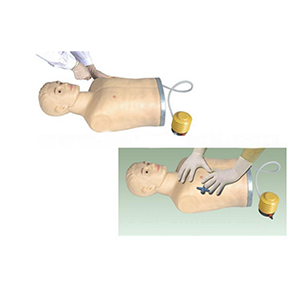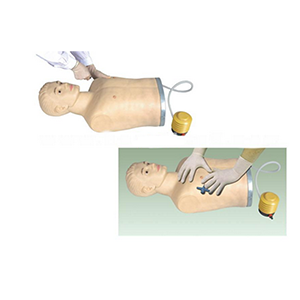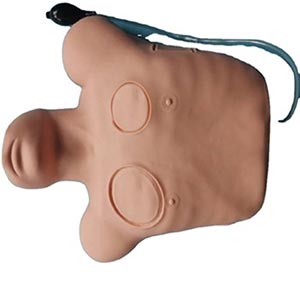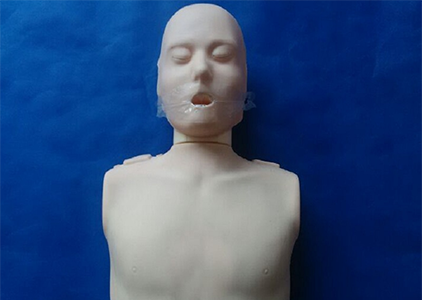
Pneumothorax is an emergency that requires rapid recognition and management, often following trauma, lung disease, and specific medical procedures such as central venipentesis. The key to successful management of pneumothorax is accurate diagnosis and rapid drainage, but the variability of the clinical environment and individual patient differences make this operation challenging. While the traditional training method cultivates students' theoretical knowledge, it is often difficult to provide enough practical opportunities, especially to cope with complex situations. As an important tool in simulating medicine, can the pneumothorax management model effectively reproduce real clinical challenges and help students better cope with real cases?
The diagnosis and treatment of pneumothorax involve a variety of anatomical and physiological knowledge, and the potential technical risks in the operation process make it difficult to train. Several key factors make pneumothorax management significantly more complex:

Individual differences in anatomical structure
Chest wall thickness, intercostal distance, and lung tissue location vary from patient to patient, making puncture localization of pneumothorax treatment more challenging, especially in patients with obesity or thoracic malformations. Traditional training does not provide a variety of exercises that address these differences.
Stress in an emergency
Emergency cases such as tension pneumothorax require puncture decompression or chest drainage in a short period of time, and the speed and accuracy of the operation is crucial. Students often lack sufficient experience in emergency situations, leading to operational errors or delayed treatment.
Clinical complication risk
The wrong puncture procedure can lead to damage to vital organs (such as the heart, lungs, or blood vessels), which can have serious consequences. According to statistics, the incidence of clinical complications of thoracic puncture and drainage is about 10%-20% (Gervais et al., 2018), some of which are caused by unskilled operation.
The core function of pneumothorax treatment model
Accurately simulate a variety of anatomical structures
The advanced pneumothorax processing model provides an adjustable simulation system to accurately reconstruct the anatomic features of different patients, such as chest wall thickness, intercostal space, and lung tissue location. This variety of simulation capabilities allows students to be exposed to more clinical scenarios in the model and accumulate experience in handling different types of patients.

Real-time feedback and guidance
Many high-end models are equipped with sensors that monitor the Angle, depth and accuracy of the puncture in real time, and provide immediate feedback to help participants quickly detect and correct errors. This capability significantly improves the accuracy of the operation.
Simulate a sudden emergency
The model can simulate the emergency state of tension pneumothorax, including dynamic changes in chest pressure, lung tissue collapse, etc., so that students can be familiar with the emergency treatment process in a highly realistic scenario.
Data support: simulation of the actual effect of training
The research shows that the pneumothorax treatment model has significant advantages in improving the skill level of students:
Improved operation success rate
A study published in Simulation in Healthcare showed that participants trained with a high-fidelity pneumothorax handling model improved puncture positioning accuracy by 30% in actual clinical procedures, and the success rate increased from 70% to 90% with traditional training (Miller et al., 2021).
Significant reduction in complications
After training with the simulation model, the complication rate of the trainees in the actual operation was reduced by 15% to 20%. Studies have pointed out that this is because model training effectively improves trainees' control of puncture Angle and depth grasp (Chen et al., 2020).
Relief of psychological stress
Multiple exercises in a simulated environment can help students familiarize themselves with the process of handling emergency situations, improve their calmness and decision-making ability in high-pressure situations. An Emergency Medicine Journal survey found that participants who underwent model training experienced a 25 to 40 percent increase in confidence when dealing with emergency pneumothorax.
Limitations and room for improvement in practical applications
Although the pneumothorax treatment model provides a more efficient and safer learning platform for training, it also has certain limitations in practical applications:
High costs limit promotion
High fidelity simulation models are expensive to develop and maintain and may limit their use in small and medium-sized hospitals and training institutions.
It is difficult to fully restore the true physiological state
Although simulation technology has been able to provide a highly simulated operating experience, it is still unable to fully replicate the complex pathological changes and unpredictable responses of patients.
faculty-dependent
Even in simulation training, experienced instructors are key, guiding students through the details of the operation and helping them make connections in clinical practice outside of the model.
Conclusion: The ability of simulation technology to cope with clinical challenges
Based on the above analysis, the pneumothorax treatment model effectively improves the skill level of students in actual clinical operations through accurate anatomical simulation, real-time operational feedback and the reproduction of emergency situations. The data showed that this training method not only significantly improved the operation success rate, but also reduced the complication rate and helped the trainees complete the task more calmly in the high-pressure environment.
Although the high cost and some technical limitations of the model still need to be improved, with the continuous development and promotion of simulation technology, its positive role in the training of pneumothorax treatment is undoubtedly irreplaceable. For healthcare organizations and training centers, investing in high-quality pneumothorax handling models is an important step in improving training outcomes and patient safety.







Sophie Asveld
February 14, 2019
Email is a crucial channel in any marketing mix, and never has this been truer than for today’s entrepreneur. Curious what to say.
Sophie Asveld
February 14, 2019
Email is a crucial channel in any marketing mix, and never has this been truer than for today’s entrepreneur. Curious what to say.